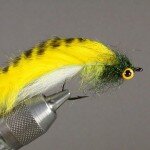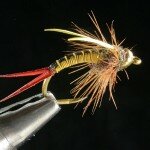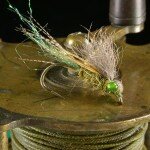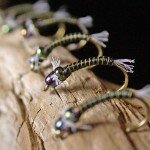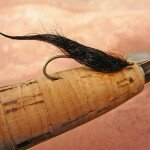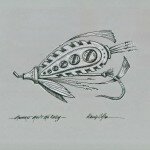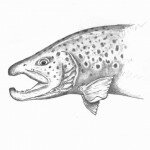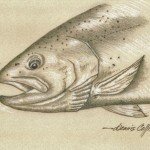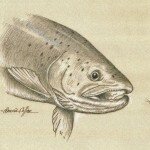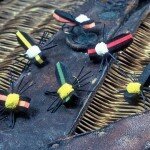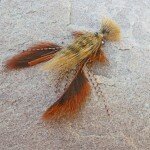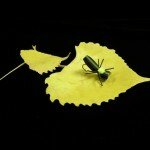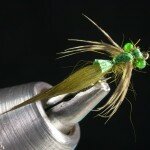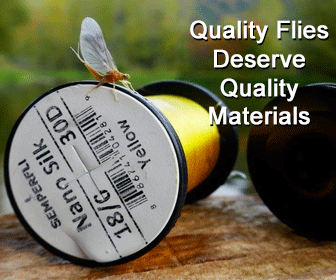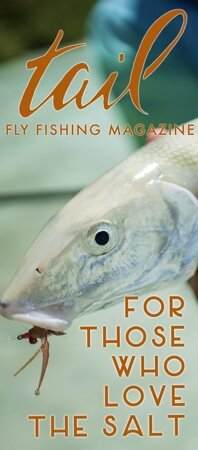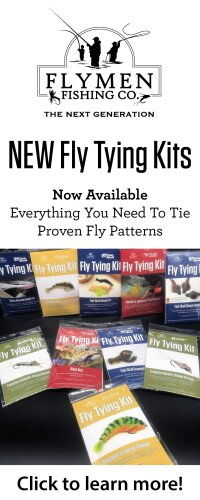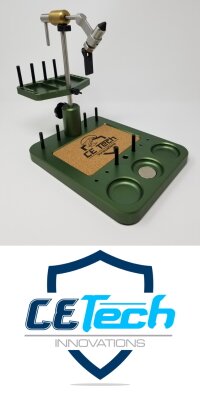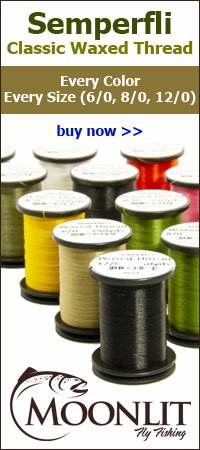
Dennis Collier claims to have been radiocarbon dated back to the early 1940’s when he arrived on the scene in his home state of Colorado. And, blessed with a father who, early on, took him on frequent fishing expeditions to Front Range venues, his fate to become a lifelong angling addict was cast at a very early age. Reminiscing on those days, Dennis states: “As a young boy back in the 40’s and 50’s I would sit on the stream bank and watch my father fly fish, amazed and elated each time he brought a beautiful trout to net. And, like many, my introduction to fly tying came in a cardboard box labeled ‘Basic Fly Tying Kit’ which Santa left under the tree one Christmas so long ago.”
“In the late 1940’s and through the 1950’s, Colorado was an uncrowded wonderland of fishing and hunting opportunity for a young man who loved the out of doors. In my early pre-driving teens, a fly fishing friend and I would enlist the assistance of our respective mothers to shuttle us to and from Chicago Creek, south of Idaho Springs, Colorado. There we would stream test our latest gaudy creations of fur and feathers on the little resident brookies and cutthroats. That was in the mid-fifties and our mothers were precursors to todays so called soccer moms.”
“When I turned sixteen, a newly claimed drivers license and a few bucks in the pocket garnered from after school jobs, was all that was needed to explore the many remote mountain areas of Colorado and neighboring Wyoming. To this day, I still prefer to find and fish lesser known waters, even if the fish aren’t quite as big, than to engage in elbow to elbow angling combat on big name angling venues.”
In the ensuing five-plus decades, Dennis logged countless hours on both lakes and rivers throughout the western United States and Canada. He has worked as a fly fishing guide and instructor, and has written numerous articles on the subject of fly tying and fly fishing for Fly Fisherman Magazine, Southwest Fly Fishing and Northwest Fly Fishing magazines. He has also been a featured fly fishing photographer on the Global Fly Fisher web site; and a featured fly tier in Southwest Fly Fishing Magazine (May/June 2011).
 Dennis encourages all who are interested in fly tying and fly fishing to visit his own web site at www.Dennis-Collier.com. Here you will find several articles in their “pre-published” and unedited form (he asks that you overlook all the typos, etc) that also graced the pages of the aforementioned publications; as well as several of Dennis’ signature fly patterns and their respective tying steps. Included on the web site is an art gallery which displays some of Dennis’ fish and fly related art work. Quoting Dennis: “I will be doing some test marketing in the near future to see if there is any interest in Limited Edition fine art prints from some of my pencil drawings of fish, and the pen and ink renderings of fantasy flies.”
Dennis encourages all who are interested in fly tying and fly fishing to visit his own web site at www.Dennis-Collier.com. Here you will find several articles in their “pre-published” and unedited form (he asks that you overlook all the typos, etc) that also graced the pages of the aforementioned publications; as well as several of Dennis’ signature fly patterns and their respective tying steps. Included on the web site is an art gallery which displays some of Dennis’ fish and fly related art work. Quoting Dennis: “I will be doing some test marketing in the near future to see if there is any interest in Limited Edition fine art prints from some of my pencil drawings of fish, and the pen and ink renderings of fantasy flies.”
Following a feature article on the Callibaetis mayfly in the June 2010 issue of Fly Fisherman Magazine, Dennis was contacted by the Catskill Fly Fishing Center and Museum in Livingston Manor, New York, requesting several of his fly patterns for inclusion in their museum archives. To Dennis, this is one of the best validations he has ever received with regard to his fly tying endeavors. Others of his fly patterns can be viewed in the book “Go-to Flies” by Toni Lolli; and on the following web sites: Flytier’s Page; Charlie’s FlyBox, Inc.; Fishing with Flies
Dennis is a contract fly designer for Umpqua Feather Merchants, and over the years has been a guest fly tier at the International Sportsman’s Show; the annual West Denver TU Fly Tying Expo; the AFFTA show; and several Colorado, Front Range, fly shops. He is currently a registered fly tying demonstrator with the International Federation of Fly Fishers (FFF) and a member of Trout Unlimited.
When it comes to fly tying Dennis subscribes to the mantra “if it isn’t broken, fix it” and as a consequence even traditional patterns are fair game to his tinkering at the tying vise. According to Dennis: “Over the years my fly tying has been more a means to an end; that is, to catch more fish. That said, I do derive a great deal of personal satisfaction in developing fly patterns that accomplish that goal, and in creating flies that have both esthetic and fish catching appeal.”
Doing fly tying demos also keeps me busy coming up with new patterns, techniques and materials to make things interesting for the audience.

